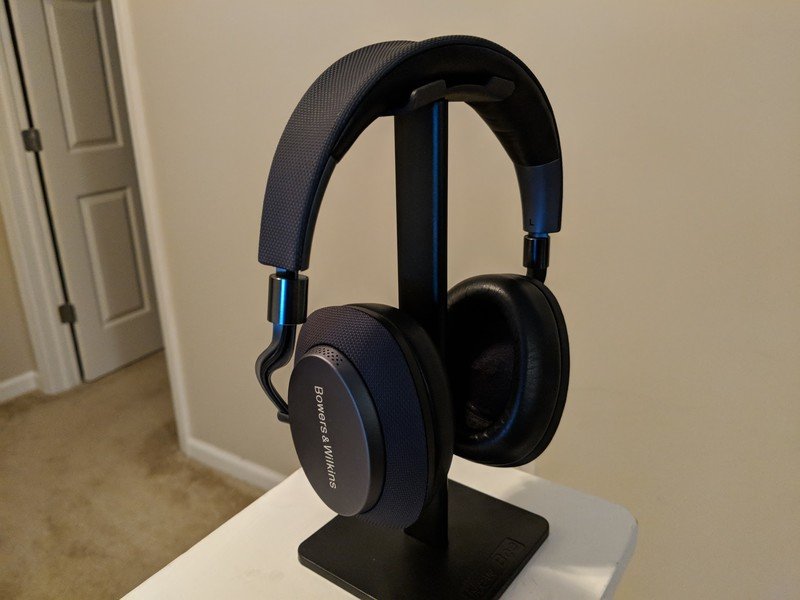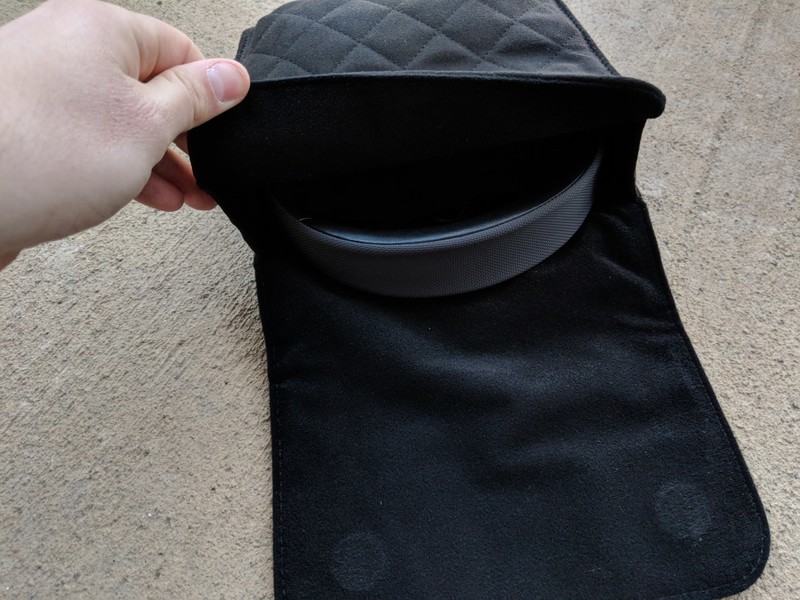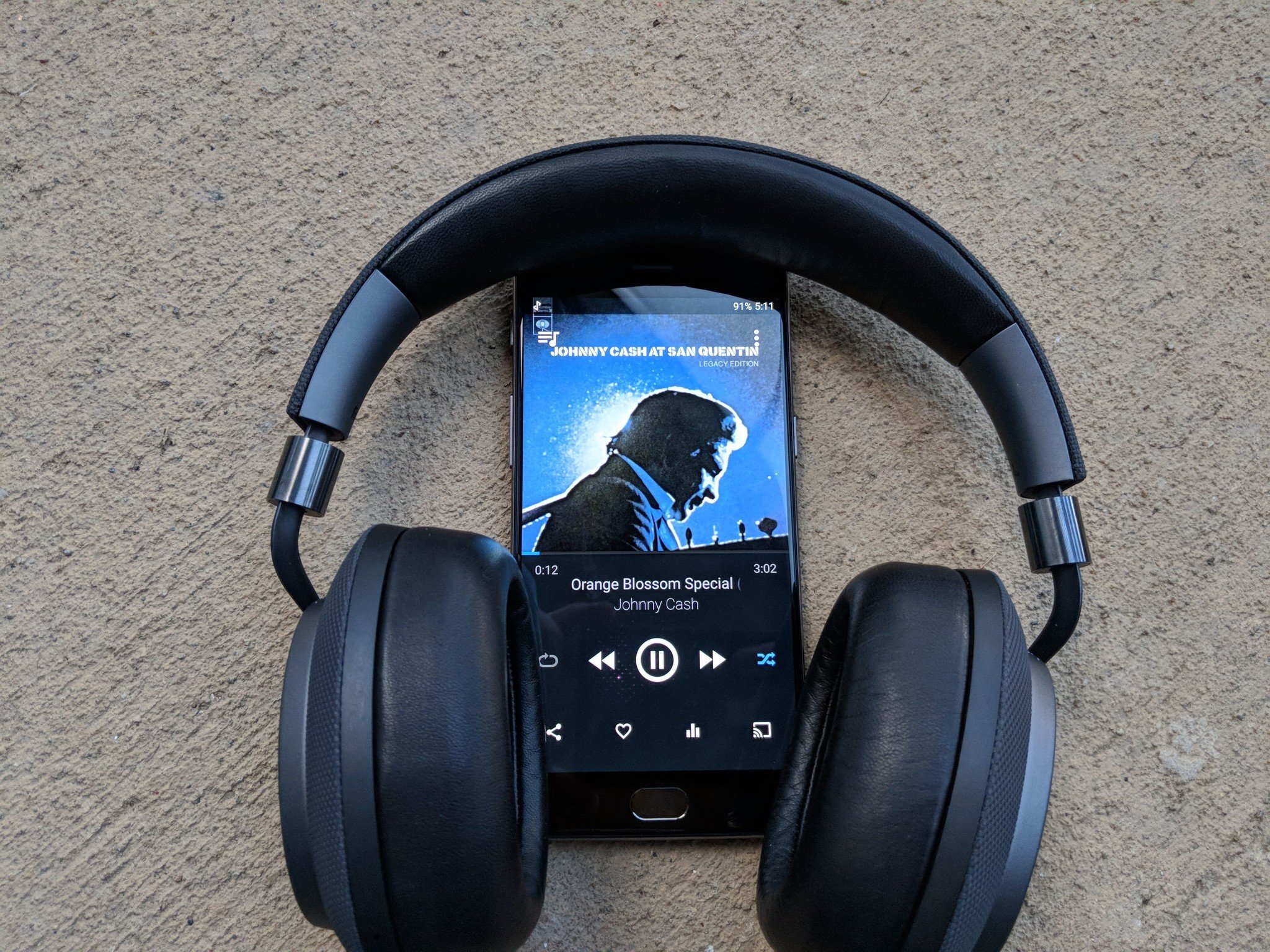You're probably familiar with headphones by companies that command the most attention: Bose Sennheiser, Sony and others. They're popular because they're great products, but also because they have great marketing departments.
Other deserving headphones fall under the radar. Enter the Bowers & Wilkins PX.
Most important: they sound amazing.
They are a pair of over-ear, closed back wireless headphones with aptX HD that can charge, update and carry audio through a USB-C port. They feature different levels of noise cancellation, including a mode that can pipe in surrounding noise. Most importantly, they sound fantastic.
I've been wearing and listening to the Bowers & Wilkins PX headphones for the past two weeks. On most days, I had the headphones on for at least eight hours per day taking helpdesk calls at my day job and listening to music and podcasts. All the music I listen to consists of MP3s originally purchased from iTunes, Google Play or Amazon. I also listened to those same music files from my home computer with audio routed through a Dragonfly Black USB DAC. For mobile use, I listened to music through my OnePlus 3T running Open Beta 15, which features the aptX HD codec.

In terms of sheer song count, my music library primarily consists of Johnny Cash (older country), Rosanne Cash (pop/alternative country) and Lily and Madeleine (folk/pop), with a smattering of other rock, pop and country artists. This is an important note, because the way the headphones have been tuned will represent certain instruments and genres better than others.
I was able to hear details in my songs that I haven't heard from any other pairs of headphones I've tried. For example, I just noticed background instruments in My Chemical Romance's "Welcome to the Black Parade" — a song I've been listening to regularly for the last 11 years — that I never picked up on other speakers or headphones. And this was while writing this review and responding to instant messages, where my attention isn't solely focused on listening to music. My current benchmark for great sounding headphones is my pair of TMA-2 headphones configured with the S02 speaker module, and the PX headphones easily match that. More impressive, they match those headphones while streaming wirelessly.
Noise cancellation
Three noise cancellation modes can be accessed in the companion app, and that app is the only way to actually toggle between them. The three modes are "Office," where surrounding noises will be piped into the headphones, "City" which blocks certain frequencies but amplifies others, and "Flight" which blocks everything.
I didn't get a chance to test these headphones on an actual flight, but the "Flight" noise canceling mode was sufficient to drown out a crowded coffee shop concert. Flight mode does have a negative effect on the quality, but not so much that it takes away from the music's overall fidelity.
The three noise cancellation modes are effective for most situations I found myself in.
The Office mode is fantastic. I use it every day to hear my coworkers over the sound of my music, and it works well enough that I haven't had to remove my headphones while listening to a conversation. Listening to podcasts in that environment can be troubling, but that's because my brain is trying to decipher two separate and unrelated conversations at once. Bowers & Wilkins estimates 22 hours of music listening while using any of the noise cancellation modes, and that lines up with my experience.
Build quality

These wireless headphones sound better than many wired headphones I've tried.
The controls and ports for the headphones all live on the right earcup. From top to bottom, there is the volume up button, play/pause, volume down, noise canceling, the 3.5mm-in port and the USB-C port. Holding down the play/pause button will activate Siri or Google Assistant, while double tapping that button will skip forward and triple tapping the button will skip backward.
I spent the previous six months using gesture controls on the Sony MDR-1000X headphones, and I was more than happy to move back to solid buttons. The buttons all feel solid with no wiggle, activate with just the right amount of force, and seem like they'll hold up to the test of time. Speaking of holding up to the test of time, the earcups are held on with magnets and can be easily swapped out.
The headphones are mostly made of metal, with plastic used for the top of the headband and leather for the bottom of the headband and the ear cups. Vlad Savov of The Verge noted he had problems with the long-term comfort of the headphones, but they're perfectly comfortable to me. I definitely get a case of headphone hair after wearing them for eight hours a day, but that happens with every pair of over-ear headphones I use.
Smart features

The PX headphones can pair with as many as eight devices, and will automatically switch the audio source depending on what's playing music. For example, if I'm listening to music from my phone and decide to fire up my favorite YouTube channel on my Chromebook, my music will automatically pause on my phone and I will start hearing the audio from the YouTube video.
Only needing to bring one USB-C cable with you for charging is a huge plus.
Another great feature is that these headphones detect when they are sitting on your head. If not, music is automatically paused. Even moving an earcup off of your ear is enough to trigger this. Again, this feature is included on other high-end Bluetooth headphones, but the PX are the first set where this feature has consistently worked for me. The companion app lets you make this feature more or less sensitive if it isn't working, but the default setting was sufficient. The feature can also be disabled entirely if you'd like.
Next on the list of things other headphones do but the PX does better: routing audio over the USB port. Because the PX's use the newer USB-C standard, users can use the same cable that came with their phone for wired USB audio rather than needing to use an adapter. For those without a headphone jack, this is great way to avoid the #donglelife.
That may not sound like a huge deal, but as someone who hates any and all clutter it's another huge win for these headphones. I tested the audio routing with my OnePlus 3T, a Samsung Chromebook Plus, a Google Pixelbook and Pixel 2 and my brother's iPhone 7, and it worked every time.
Should you buy them? Definitely

I do have one minor complaint about these headphones, and one larger one. The minor complaint is that I wish the battery was easily removable so that a new one could be popped in a few years down the road.
The major complaint is that Bowers & Wilkins don't include a hard case. The included soft case is nice, with a magnetic clasp and interior pouch for cables, but anyone taking these on vacation or a business trip would want more protection. And at $400, they should come with one.
Those complaints aside, these are fantastic headphones. The USB-C port means you'll only need one charger for both phone and headphones, and being able to route audio through the USB port will better prepare those without a headphone jack on their phone. Automatically having my music pause when I take them off is a great convenience and, above all, they sound amazing.
At $400, they're definitely at the higher end of what you'll spend for headphones, but I feel they are well worth it.


